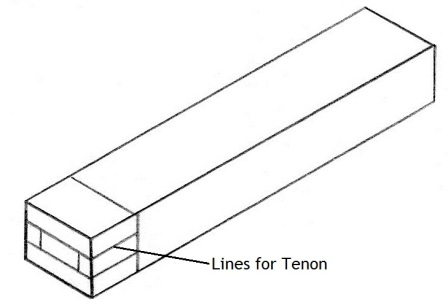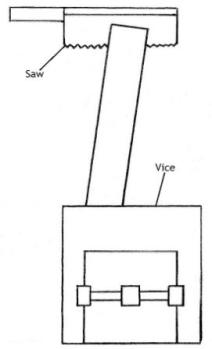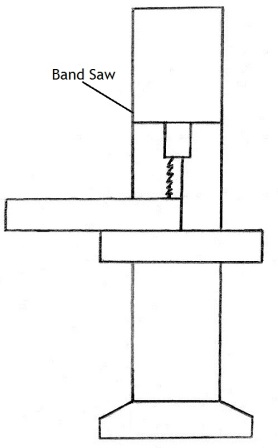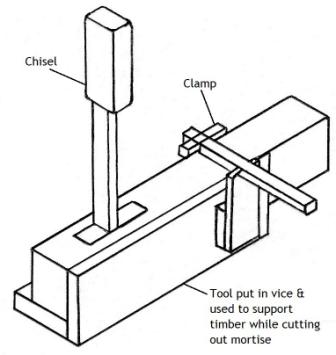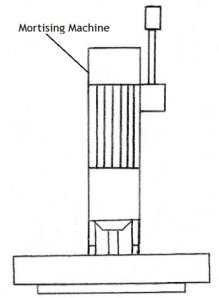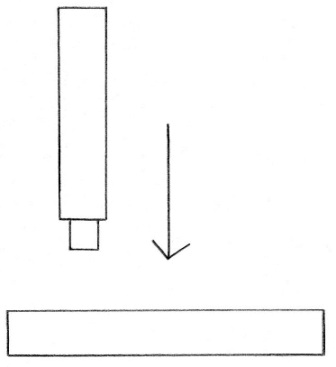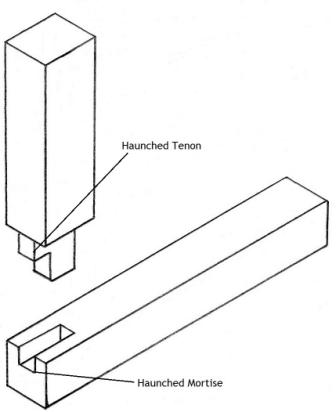Step4: Now you must cut the mortise and once again there are two methods and the first involves a mallet and chisel.
If you use the first method you need to put some timber in a vice to rest your timber against and then clamp the two bits of timber together to hold them steady but make sure to put some scrap timber in between the clamp so that it does not mark your timber.
Now get the chisel and hammer it straight into the wood with your mallet. Apply some pressure away from the chisel bevel and repeat this on the other side of the mortise to create a V shape.
Work from the centre to the outside of the mortise and be patient meaning do not remove too much timber at once also remember to stop at a depth that is the same as the length of your mortise.
The second method involves the mortising machine and what you must do is set the width and depth before you use it. Once they are set simply drill into your mortise bit by bit to remove the timber.
This method is also the faster more accurate one but remember not to drill too much at once and make sure the gap in the drill bit is facing the empty space of the mortise so the excess timber can escape when it is removed.
